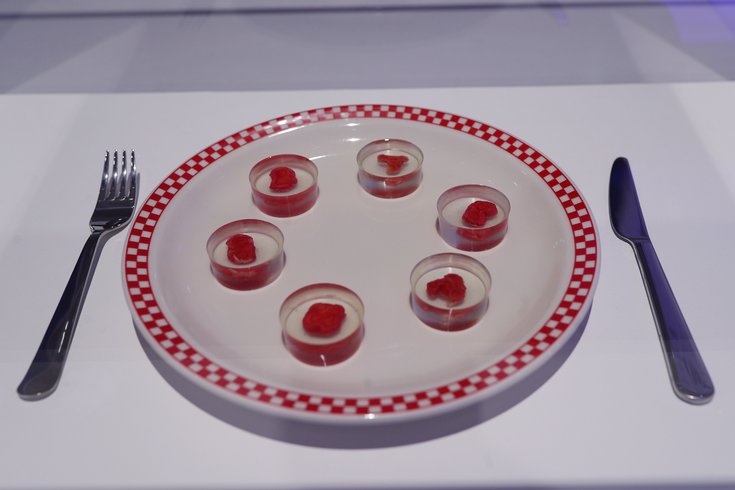
I recently read an article about an art work created by Orkan Telhan, who is actually a Penn professor, called “Ouroboros Steak.” When I first saw the picture above, I had thought the red objects were actual steaks (beef? tuna, perhaps?) but I was shocked to read that they were in fact steaks made from human cells. Apparently, “Ouroboros” is an ancient Egyptian symbol of a snake eating its own tail, and Telhan named the art work after it to make a commentary on what the future could look like if climate change and mass meat production progress. The art work was on display at the PMA in 2019 and received little backlash. However, since the work moved to London in October of this year, the work has been receiving many negative reactions especially on social media. Many have taken to Twitter to express their disgust at the work, saying “I’d rather eat dirt. That’s just not right.” Some have accused Telhan of promoting cannibalism.
I personally feel that Telhan getting such feedback demonstrates the effectiveness of his work, which was intended to be satire. Good satirical work, whether it be an art work like this piece or even stand up, evokes strong emotions out of audiences and makes them rethink the validity of societal norms and status quos. Meat-eaters who have no hesitation in eating red meats may think this piece is repulsive and rethink the future and sustainability of meat consumption. The piece certainly grossed me out but simultaneously made me think about the implications that meat production has on the environment and imagine a world where resources have run out and we need to harvest meat from human cells. It is a horrifying thought, but given the urgency of the climate change crisis, I find pieces like this extremely evocative and important.
